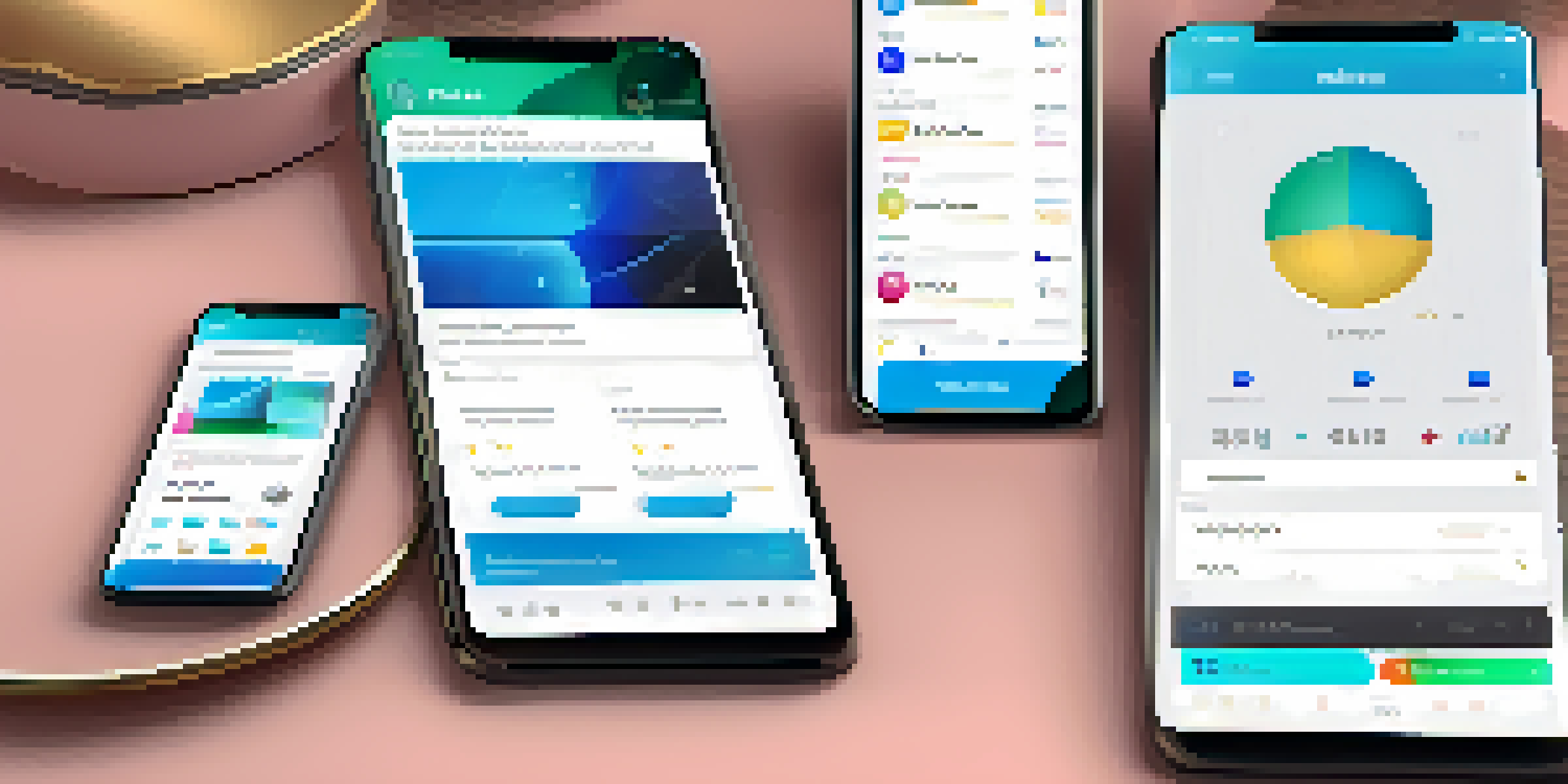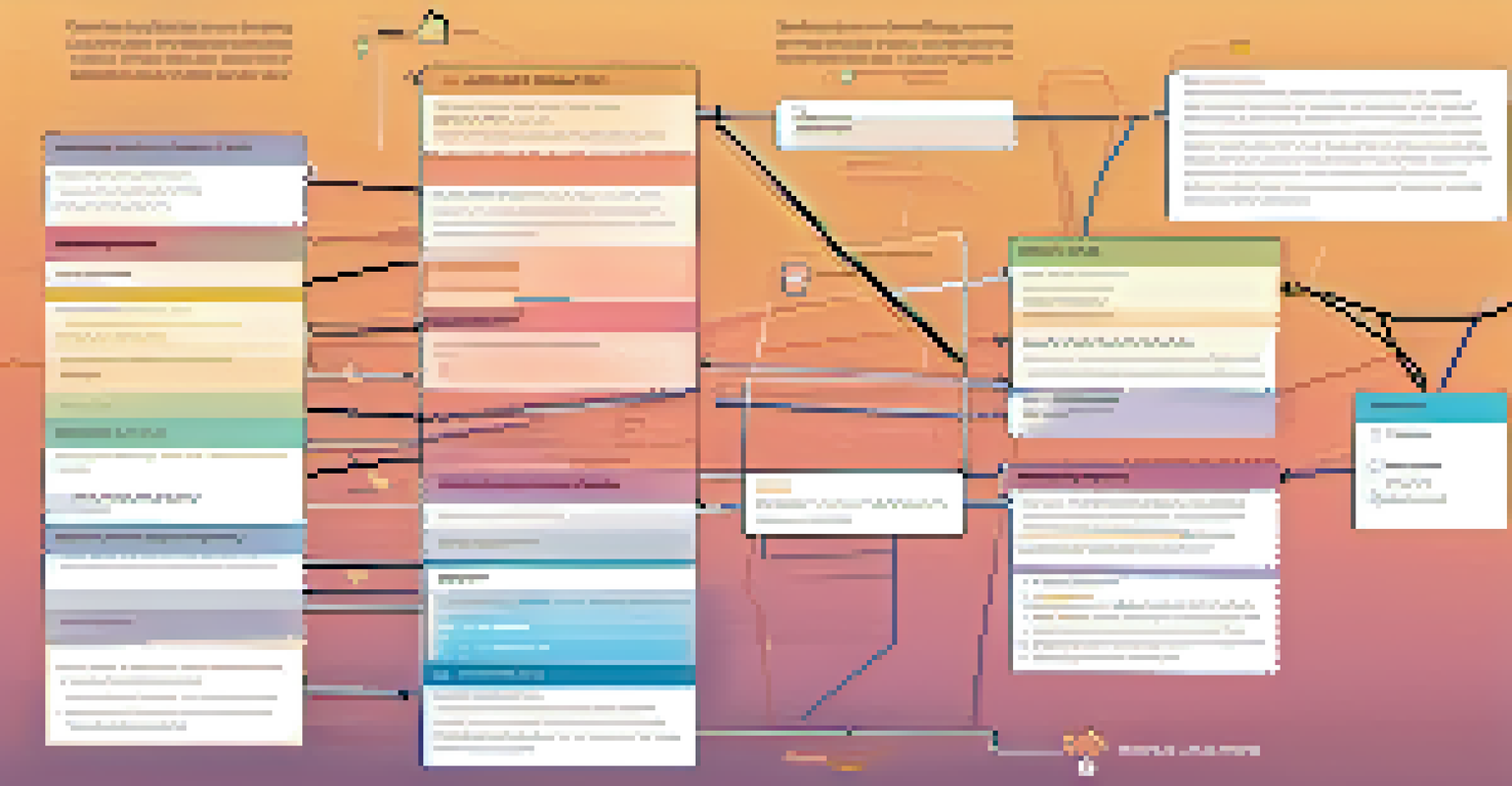Creating Intuitive Navigation for Crypto Applications

Understanding the Importance of Intuitive Navigation
Intuitive navigation is crucial for any application, but especially for crypto apps where users often encounter complex concepts. When users can easily find their way around, they feel more confident and engaged. This confidence is essential in the crypto world, where uncertainty can be intimidating.
In the world of design, simplicity is the ultimate sophistication.
Think of navigation as a map; if it's easy to read, you won't get lost. For crypto apps, a clear navigation structure helps users understand their options, whether they're buying, selling, or trading. By prioritizing clarity, you minimize frustration and maximize user satisfaction.
Moreover, an intuitive navigation system can significantly reduce the learning curve for new users. As more people enter the crypto space, simplifying their experience can help onboard them quickly and effectively, fostering a sense of community and loyalty.
Identifying User Needs and Preferences
To create effective navigation, start by understanding your users. Conduct surveys, interviews, or usability tests to gather insights about their needs and preferences. Knowing what users expect from a crypto app helps you tailor your navigation accordingly.

For example, novice users may prioritize educational resources, while experienced traders might look for advanced trading tools. By segmenting your audience, you can design navigation that caters to diverse user needs, ensuring everyone finds what they're looking for.
Intuitive Navigation Boosts Confidence
A clear navigation structure enhances user confidence and engagement, especially in complex crypto applications.
Remember that user preferences can evolve, especially in the fast-paced world of crypto. Regularly revisiting and updating your user research will help you stay ahead and keep your navigation relevant and useful.
Designing a Clear Information Architecture
Information architecture (IA) refers to the way information is organized and structured within an app. A well-designed IA allows users to navigate effortlessly through your crypto application, making it essential for a positive user experience. Start by categorizing features and content logically.
Good design is obvious. Great design is transparent.
For instance, you could group functionalities into categories like Trading, Wallet, and Learning Resources. This clear segmentation helps users find what they need quickly, reducing confusion and enhancing engagement.
Using visual aids, like flowcharts or wireframes, can help in planning your IA. By visualizing how users will interact with your app, you can identify potential bottlenecks and streamline the navigation process.
Utilizing Familiar Design Patterns
When designing navigation for crypto applications, it’s beneficial to use familiar design patterns. Users tend to feel more comfortable with interfaces that mimic those they have already encountered. By employing standard navigation elements like tabs, dropdowns, and side menus, you can make your application feel more intuitive.
For example, many users are accustomed to seeing a sidebar for main navigation on financial platforms. Implementing a similar layout in your crypto app can create a sense of familiarity, allowing users to focus on learning and engaging with the platform rather than deciphering how to navigate it.
User-Centric Design is Key
Understanding user needs through research helps tailor navigation, ensuring diverse preferences are met effectively.
However, while familiarity is essential, don’t hesitate to innovate where it makes sense. Striking the right balance between familiarity and uniqueness can set your app apart while still providing a user-friendly experience.
Implementing Responsive Navigation Designs
In today's mobile-centric world, responsive design is a must-have for any application, including crypto apps. Users access their accounts on various devices, so navigation should adapt seamlessly to different screen sizes. This responsiveness ensures that users have a consistent experience, whether they're on a smartphone, tablet, or desktop.
Consider using collapsible menus or icons that expand when clicked, allowing you to save space on smaller screens without sacrificing functionality. This approach not only keeps the interface clean but also makes it easier for users to navigate on-the-go.
Testing your navigation on multiple devices is essential to identify any usability issues. By gathering feedback from users on different platforms, you can refine your design and ensure it meets their needs.
Incorporating User Feedback for Continuous Improvement
User feedback is invaluable in creating intuitive navigation. After launching your crypto app, actively seek input from users about their navigation experience. This feedback can reveal pain points and highlight areas for improvement that may not have been apparent during the design phase.
Consider implementing in-app surveys or feedback forms to gather insights directly from users. By asking targeted questions about navigation, you can pinpoint specific issues and address them quickly.
Continuous Feedback for Improvement
Incorporating user feedback and conducting regular testing are essential for refining navigation and enhancing user experience.
Remember, the goal is to create a navigation experience that evolves with your users. Regularly updating your app based on feedback will not only enhance usability but also foster a sense of community and trust among your users.
Testing and Iterating for Optimal Navigation Experience
Testing is a critical part of the navigation design process. Conduct usability tests with real users to see how they interact with your crypto app. Observing users as they navigate can provide insights into areas where they struggle and where they excel.
Once you gather data from testing, it’s time to iterate. Make necessary adjustments based on user behavior and feedback. This iterative process ensures that your navigation is constantly improving and adapting to user needs.

Don't forget to test again after making changes. Continuous testing helps you refine the navigation experience, ensuring it remains intuitive and user-friendly as new features and updates are introduced.